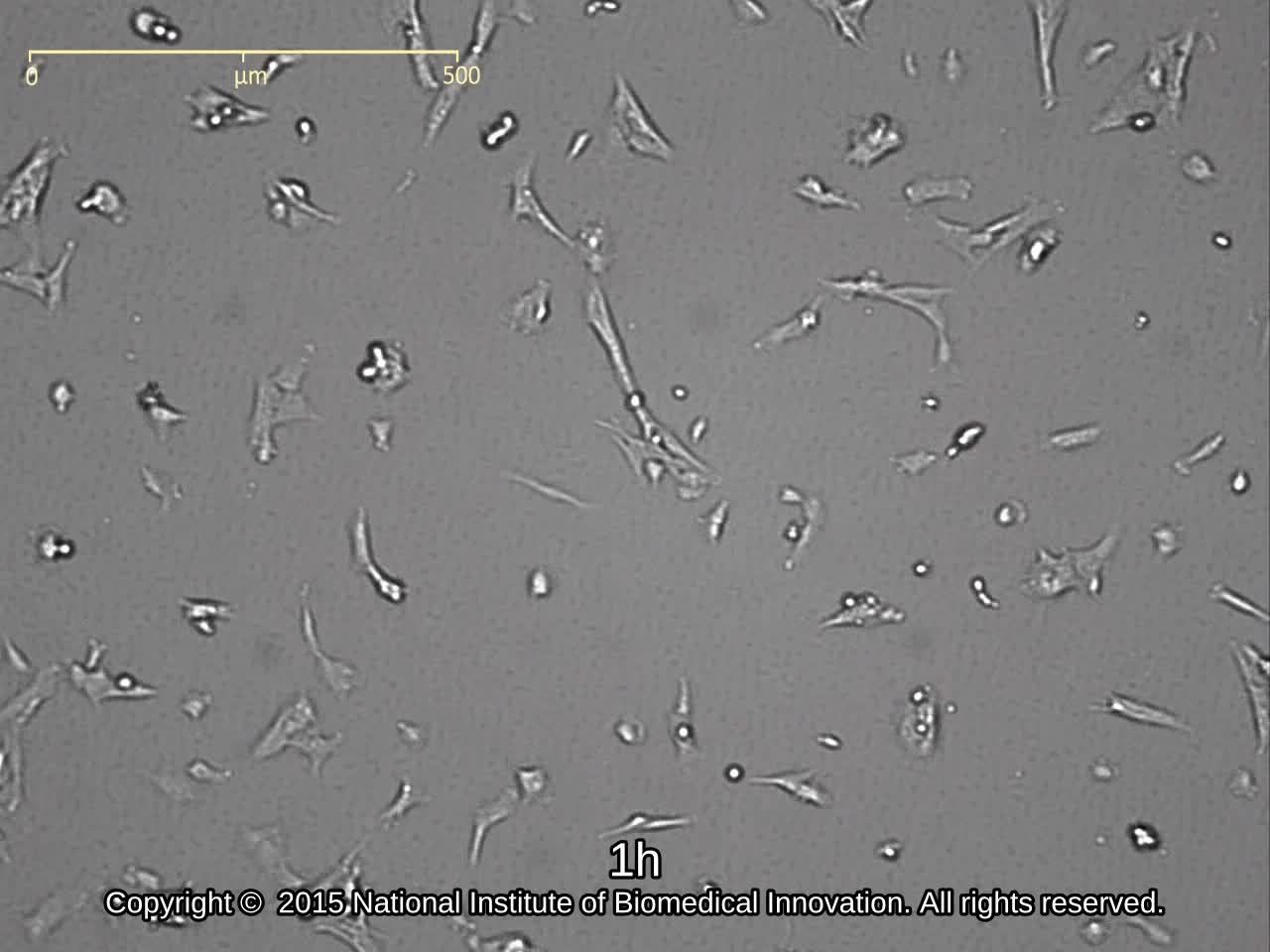JCRB1612 HuS-L12/10
Cell information
Cell type:genetically-modified cells (View Pricing Information)
| JCRB No. | JCRB1612 | Cell Name | HuS-L12/10 |
|---|---|---|---|
| Profile | Human immortalized cell line derived from MRC-5 cells. | Other Name | |
| Animal | human | Strain | |
| Genus | Homo | Species | sapiens |
| Sex | M | Age | fetus |
| Identity | available | Tissue for Primary Cancer | |
| Case history | Metastasis | ||
| Tissue Metastasized | Genetics | ||
| Life Span | infinite | Crisis PDL | |
| Morphology | fibroblast-like | Character | |
| Classify | transformed | Established by | Imai, S. |
| Registered by | Umezawa, A. | Regulation for Distribution | |
| Comment | Year | 2013 | |
| Medium | Basal medium Eagle with 10% fetal calf serum. | Methods for Passages | Cells are treated with 0.02% EDTA and 0.25% trypsin |
| Cell Number on Passage | Race | ||
| CO2 Conc. | 5% | Tissue Sampling | Lung |
| Tissue Type |
| Detection of virus genome fragment by Real-time PCR | |||||||||
|---|---|---|---|---|---|---|---|---|---|
| Detected DNA Virus | tested | Detected RNA Virus | tested | ||||||
| CMV | - | parvoB19 | - | HCV | - | HTLV-1 | - | ||
| EBV | - | HBV | - | HIV-1 | - | HTLV-2 | - | ||
| HHV6 | - | HTLV-1 | - | HIV-2 | - | HAV | - | ||
| HHV7 | - | HTLV-2 | - |
-/negative. +/positive. nt/not tested. (positive (+) does not immediately mean the production of infectious viral particles.) |
|||||
| BKV | - | HIV-1 | - | ||||||
| JCV | - | HIV-2 | - | ||||||
| ADV | - | HPV18 | - | ||||||
| Notes | |||||||||
| Reference | |
|---|---|
| Pubmed id:10799292 | PCCX1, a novel DNA-binding protein with PHD finger and CXXC domain, is regulated by proteolysis. Fujino T,Hasegawa M,Shibata S,Kishimoto T,Imai S,Takano T Biochem Biophys Res Commun. 2000 May 10;271(2):305-10 |
| Pubmed id:9398664 | Dissociation of Oct-1 from the nuclear peripheral structure induces the cellular aging-associated collagenase gene expression. Imai S,Nishibayashi S,Takao K,Tomifuji M,Fujino T,Hasegawa M,Takano T Mol Biol Cell. 1997 Dec;8(12):2407-19 |
| Pubmed id:7935433 | Immortalization-susceptible elements and their binding factors mediate rejuvenation of regulation of the type I collagenase gene in simian virus 40 large T antigen-transformed immortal human fibroblasts. Imai S,Fujino T,Nishibayashi S,Manabe T,Takano T Mol Cell Biol. 1994 Nov;14(11):7182-94 |
| Pubmed id:8397328 | Escape from in vitro aging in SV40 large T antigen-transformed human diploid cells: a key event responsible for immortalization occurs during crisis. Imai S,Saito F,Ikeuchi T,Segawa K,Takano T Mech Ageing Dev. 1993 Jun;69(1-2):149-58 |
| Pubmed id:1280416 | Loss of collagenase gene expression in immortalized clones of SV40 T antigen-transformed human diploid fibroblasts. Imai S,Takano T Biochem Biophys Res Commun. 1992 Nov 30;189(1):148-53 |
| Movies |
|---|

|
LOT Information
Viability/Growth rate/Cell number are represented as actual values measured at lot presentation in JCRB, but are not guaranteed values. Additionally, the doubling time is a rough value measured during passages.| Cell No. | JCRB1612 | Cell Name | HuS-L12/10 |
|---|---|---|---|
| LOT No. | 11042014 | Lot Specification | distribution |
| Medium | Basal Medium Eagle(SIGMA) with 2mM L-Glutamine and 10% heat inactivated fetal bovine serum(SIGMA12J396) | Temperature | 37 C |
| Cell Density at Seeding | 2.05-4.55x10^4cells/sq.cm | Methods for Passages | Cells were harvested after treatment with 0.25%trypsin(GIBCO) and 0.02% EDTA. |
| Doubling Time | NT | Cell Number in Vial (cells/1ml) | 1.31x10^6 |
| Viability at cell freezing (%) | 97.0 | Antibiotics Used | free |
| Passage Number | p4* | PDL | NT |
| Sterility: MYCOPLASMA | - | Sterility: BACTERIA | - |
| Sterility: FUNGI | - | Isozyme Analysis | NT |
| Chromosome Mode | NT | Chromosome Information | NT |
| Surface Antigen | NT | DNA Profile (STR) | D5S818:11,12 D13S317:11,14 D7S820:10,11 D16S539:9,11 VWA:15 TH01:8 AM:X,Y TPOX:8 CSF1PO:11,12 |
| Adhesion | Yes | Exoteric Gene | NT |
| Medium for Freezing | Cell Banker BLC-1(Nihon Zenyaku Industries) | CO2 Conc. | 5 % |
| Viability immediately after thawing (%) | Additional information |